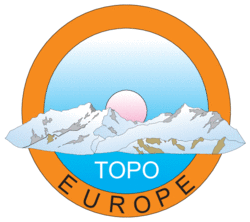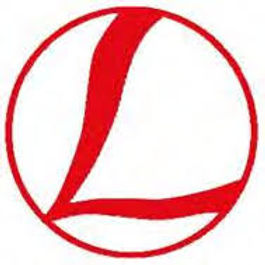ABSTRACT VOLUME
Sunday September 19
Arrival of participants, buffet dinner (17:30-20:30 hrs) and Ice breaker starting at 20:00 hrs
Monday September 20
07:00-08:30: Breakfast
Session 1: Surface processes, landscapes, sediment fluxes and depositional systems
Conveners: Daniel Garcia Castellanos (ICTJA-CSIC), Stephane Dominguez (CNRS Montpellier) and Liviu Matenco (Utrecht)
Keynote lectures:
- 08:45-09:00: Ernst Willingshofer and Ylona van Dinther: Welcome
- 09:00-09:40: Todd Ehlers (Tübingen): How Plants Shape Mountains
- 09:40-10:20: Maarten Kleinhans (Utrecht): Living landscapes in the lab: bio-morphodynamics of rivers, estuaries and tidal systems
- 10:20-10:50: coffee break
- 10:50-11:30: Magdalena Scheck-Wenderoth (Aachen): Closing the gap between data and models: from static 3D data-based configurations to process simulations
Pitch your poster: 11:30-12:30: 2 minutes presentations to advertise posters of sessions 0, 1 & 2
12:30-14:o0: LUNCH
Session 2: Magmatic systems from plumes to dikes
Conveners: Olivier Galland (Oslo), Taras Gerya (ETH Zurich) & Boris Kaus (Mainz)
Keynote lectures:
- 14:00-14:40: Richard Katz (Oxford): Magma dynamics at rifts: from the viscous mantle to the brittle lithosphere
- 14:40-15:20: Valentina Magni (CEED-Oslo): Magmatism from the onset to the end of a subduction zone
- 15:20-15:50: coffee break
- 15:50-16:30: Sam Poppe (Space Research Center PAS, Warsaw): Laboratory experiments support a paradigm shift in numerical modelling of complex magma-induced deformation
16:30-18:30: poster session for topical sessions 0, 1 & 2
18:30-20:30: DINNER
Evening lecture: 20:30-21:15: Wilco Hazeleger (Dean Faculty of Geosciences UU): Climate modeling and national and global impact
POSTERS SEPTEMBER 20:
Session 0: State-of-the-art in modeling: methods and techniques (posters only)
- Mariano Arnaiz-Rodríguez. MantleMod1D: an interactive 1D code to forward model the thermal, compositional, and mechanical structure of the Earth’s mantle
- Nestor Cardozo. cdem: A unique software suite for discrete element modelling of tectonic structures
- Michele Cooke. Prediction of Off-Fault Deformation from Experimental Strike-slip Fault Structures using the Convolutional Neural Networks
- Stephane Dominguez. Searching for a suitable analogue material to investigate geomorphic processes in active tectonic settings: success, limitations, improvements, and hopes
- Jan Oliver Eisermann. Long-term isostatic crustal relaxation of large terrestrial meteorite impact structures: insights from scaled analogue experiments
- Clément Garcia-Estève. Tectonic/erosion/sedimentation processes – comparison between analog and numerical modelling
- Paraskevi Io Ioannidi. Coupling Discrete Element and Lattice Boltzmann methods to simulate grain comminution in “wet” ring shear experiments
- Boris Kaus. Developing the next generation geodynamics codes using Julia
- Emilie Macherel. GPU-based pseudo-transient finite difference solution for 3-D gravity- and shear-driven power-law viscous flow
- Nicolás Molnar. Challenges, limitations, and lessons learned from analogue models of thick-skinned tectonics focused on basement fault reactivation
- Ronald Pijnenburg. Free access to research facilities and data: EPOS-NL, the Dutch research infrastructure for solid Earth sciences
- Michael Rudolf. Time dependent properties of granular media – The GeoMod Benchmark 2021
- Stefan Schmalholz. Thermo-Hydro-Mechanical-Chemical modelling: applications to dehydration vein formation and reactive melt migration
- Thorben Schöfisch. Strain distribution across modelled thrust imbricates described by magnetic fabric
- Eh Tan. GPU Acceleration on Geodynamic Simulation via OpenACC
Session 1: Surface processes, landscapes, sediment fluxes and depositional systems
- Òscar Gratacós. Constraining environmental parameters using forward numerical modelling. Application to an Aptian carbonate system (E. Iberia)
- Hanneke Heida. Flexural-isostatic modelling of the vertical motions and paleotopography of the Alboran Sea since the Messinian Salinity Crisis
- Paul Perron. Constraining the mantle contribution to thermal history of sedimentary basins by driving kinematically 2D thermomechanical simulations of passive margins
Session 2: Magmatic systems from plumes to dikes
- Séverine Furst. Dynamic propagation of magma intrusions, a new 2D numerical approach constrained by analogue modeling
- Muriel Gerbault. Volume-of-fluid simulations of gravitational instabilities in the Earth’s crust, application to the migmatite domes of Naxos (Greece)
- Dániel Kiss. 2D thermo-mechanical-chemical coupled numerical models of interactions between a cooling magma chamber and a visco-elasto-plastic host rock
- Mingqi Liu. Surplus melt induces the dynamic LAB near the mid-ocean ridge
- Adina Pusok. Buoyancy-driven flow beneath mid-ocean ridges: the role of chemical heterogeneity
____________________________
Tuesday September 21
Session 3: Tectonics of faulting, folding and salt systems
07:00-08:45: Breakfast
Conveners: Stefan Schmalholz (Lausanne), Michele Cooke (Massachusetts), Ernst Willingshofer (Utrecht)
Keynote lectures:
- 09:00-09:40: Marta Adamuszek (Polish Geol. Inst.): Long-term rheological properties of the folded impure rocksalt. A case study from the Ocnele Mari salt mine, Romania
- 09:40-10:20: Oriol Ferrer (Barcelona): Effect of pre-salt relief on the evolution of salt-bearing passive margins: physical models and comparison with the Santos Basin (Brazil)
- 10:20-10:50: coffee break
- 10:50-11:30: Pauline Souloumiac (Cergy-Pontoise): Control of geometrical and mechanical parameters on strike-slip fault segmentation: insights from sandbox experiments
Pitch your poster: 11:30-12:30: 2 minutes presentations to advertise posters of sessions 3 & 4
12:30-14:o0: LUNCH
Session 4: Geohazards and seismotectonics
Conveners: Onno Oncken (GFZ) and Ylona van Dinther (Utrecht)
Keynote lectures:
- 14:00-14:40: Jean-Phillipe Avouac (CalTech): From kinematics to dynamic modeling of slow slip events
- 14:40-15:20: Frederic Gueydan (Montpellier): Transient ductile strain localization triggered by fluid-enhanced microfracturing and sealing: a possible analogue to Episodic Tremor and Slip
- 15:20-15:50: coffee break
- 15:50-16:30: Matthias Rosenau (GFZ Potsdam): Analogue earthquakes, seismic cycles and seismotectonic evolution: Bridging the geodetic to geologic observation gap with experimental modelling
16:30-18:30: poster session for topical sessions 3 & 4
18:30-20:30: DINNER
Evening lecture: 20:30-21:15: Jan Diederik van Wees (TNO): Gas extraction and induced seismicity in the Netherlands
POSTERS SEPTEMBER 21:
Session 3: Tectonics of faulting, folding and salt systems
- Anthony Adwan. Stochastic mechanical analysis of the stress field in a thrust fold
- Victor Alania. Frontal zone structural geometry of retro-wedge of the Central Lesser Caucasus orogen: new insights from seismic reflection profiles data
- Marwa Boussarsar. Modeling the spontaneous formation of pull-apart basins: application to the El Hamma Basin, Central Tunisia
- Onise Enukidze. Structural model of frontal part of the eastern Achara-Trialeti fold-and-thrust belt, Georgia
- Nemanja Krstekanic. Strain partitioning along a curved strike-slip fault system during indentation: inferences from analogue modelling
- Sibiao Liu. Variations in crustal thickness and faulting patterns in oceanic ridge–transform fault systems: Insights from gravity and geodynamic modelling
- Daniele Maestrelli. Investigating normal fault reactivation through analogue models of multiphase rifting: applications to the Turkana depression, East Africa
- David Oakley. Comparison of Kinematic and Elastic Dislocation Models of Fault-Propagation Folds Through Inverse Modeling
- Leonardo Pichel. Does rifted margins salt tectonics balance? The competition between rifting, syn-depositional flow, and gravity-driven tectonics
- Alexandre Razmadze. Structural model of the western Kura foreland fold-and-thrust belt using seismic reflection profiles: implication for forward kinematic modelling
- Matthias Rosenau. Some contributions to salt tectonics from new analogue models run at GFZ Potsdam during EPOS TNA activities: Boundary conditions, monitoring, materials
- Emily Ross. Relating slip behavior to off-fault deformation using physical models
- Nedhir Sebai. The perched synclines look-alike of central Tunisia: Examples of diapir Rise– Fall – Rise illustrated by field, geophysical, and experimental data
- Satoshi Tonai. Deformation and stress cycle during frontal thrust formation of sandbox Coulomb wedges
- Sarah Visage. Strike-slip fault in a sandbox: insight on off-fault deformation
- Michael Warsitzka. A new analogue modelling approach integrating the effects of tectonic extension and gravity gliding on salt tectonics in rift basins
- Frank Zwaan. How the interaction between mantle and crustal weaknesses affects rift development: insights from a 3D experimental study
Session 4: Geohazards and seismotectonics
- Adrien Damon. Investigating the impact of environmental forcings on fault reactivation in the Paris Basin
- Hanna Elston. Non-steady-state slip rates emerge along evolving restraining bends under constant loading
- Ehsan Kosari. Surface deformation signals governed by mechanical-frictional interaction of the wedge and megathrust over subduction zone seismic cycles
- Meng Li. Deciphering earthquake nucleation in Groningen: how much slip is aseismic?
- Valentin Marguin. Numerical Investigation of the impact of fluid on the earthquake cycle
- Casper Pranger. Rate-and-State frictional plasticity as a reaction-diffusion equation in a continuum model
________________________________
Wednesday September 22
07:00-08:45: Breakfast
Session 5: Rheology and fluids
Conveners: Suzanne Buiter (Aachen), Stefan Schmalholz (Lausanne) and Fred Beekman (Utrecht)
Keynote lectures:
- 09:00-09:40: Jacqueline Reber (Iowa State): Impact of semi-brittle rheology on deformation dynamics: An experimental investigation
- 09:40-10:20: Ludovic Räss (ETH Zurich): Spontaneous flow and strain localisation arising from multi-physics coupling – forward and inverse supercomputing approaches
- 10:20-10:50: coffee break
- 10:50-11:30: Antoine Auzemery (Utrecht): Role of hydration-induced serpentinization and magmatism in the formation subduction zones at passive margins
Pitch your poster: 11:30-12:30: 2 minutes presentations to advertise posters of sessions 5 & 6
12:30-14:o0: LUNCH
Session 6: Geodynamics and plate tectonics
Conveners: Taras Gerya (ETH Zurich), Wouter Schellart (VU Amsterdam) and Ernst Willingshofer (Utrecht)
Keynote lectures:
- 14:00-14:40: Stephan Sobolev (GFZ): Interplay of surface and deep-seated processes in initiation and evolution of plate tectonics on Earth
- 14:40-15:20: João Duarte (Lisbon): Laboratory models of subduction: interface rheology and overriding plate deformation
- 15:20-15:50: coffee break
- 15:50-16:30: Laetitia Le Pourhiet (UPMC): Continental Break-up in 3D: are 2D concepts all valid?
16:30-18:30: poster session for topical sessions 5 & 6
18:30-20:30: DINNER
POSTERS SEPTEMBER 22:
Session 5: Rheology and fluids
- Maria-Gema Llorens. Ice-sheet flow transitions: for how long can crystallographic preferred orientations be preserved?
- Sylvain Mayolle. Investigating non-linear fault damage zone scaling through analog modeling
- Maria Natale Castillo. Modeling approach to estimate seismic attenuation from dry and wet upper crustal rock’s rheology
Session 6: Geodynamics and plate tectonics
- István Bozsó. Modelling the subduction and roll-back of narrow oceanic slabs: Formation of back-arc basins and slab detachment in the Carpathians subduction zone
- Jakub Fedorik. Numerical validation of complex strike-slip fault system: example of Restraining Bends in Lebanon
- Taras Gerya. Segmentation of subducting oceanic plates in the outer rise
- William Halter. Numerical modelling of strain localization by anisotropy generation during viscous deformation
- Ivone Jiménez-Munt. Geodynamic modelling of lithospheric slab tearing and its topographic response. Application to the Gibraltar Arc
- Arijit Laik. Continental Collision in 3D buoyancy-driven whole-mantle scale numerical models
- Yuan Li. Free surface models of partially molten rocks with visco-elasto-viscoplastic rheology
- Ana Negredo. Continental delamination in the northern Apennines: insights from thermo-mechanical modelling
- Jakub Pokorný. Feedbacks between subduction dynamics and slab deformation: Combined effects of nonlinear rheology of a weak decoupling layer and phase transitions
- Michaël Pons. Control of subduction dynamics on shortening magnitude in the Central Andes: a thermomechanical modeling approach
- Kristóf Porkoláb. Extrusion of subducted crust explains the emplacement of far-travelled ophiolites
- Lars Rüpke. Oceanic Transform Faults revisited
- Jonas Ruh. Self-consistent grain size evolution controls lithospheric shear zone formation during rifting
- Wouter Schellart. Geodynamics of short-lived, long-lived and periodic flat slab subduction
- Timothy Schmid. Continental rifting in rotational systems: Unravelling rift propagation processes using spatiotemporal high resolution quantified crustal-scale analogue models
- Guido Schreurs. Analogue models of lithospheric-scale rifting monitored in a CT-scanner
- Anna-Katharina Sieberer. Internal deformation of the Dolomites Indenter, eastern Southern Alps: Insights from crustal scale analogue modelling
- Vincent Strak. 3D mantle flow induced by retreating and advancing slabs: insights from analogue subduction models analysed with a tomographic Particle Image Velocimetry technique
- Magdala Tesauro. Effects of multi-extensional tectonics in a cratonic area: the origin of the Congo basin
- Kai Xue. Overriding plate deformation and topography during slab rollback and slab rollover: insights from subduction experiments
- Wentao Zhang. Integrated geophysical-petrological modeling of the lithospheric mantle along the northern Apennines, Dinarides and Pannonian Basin
Thursday September 23, 2021: morning
Visit to the new Earth Simulation Laboratory at Utrecht University
~ 12:00: end of lab visit, end of GeoMod






